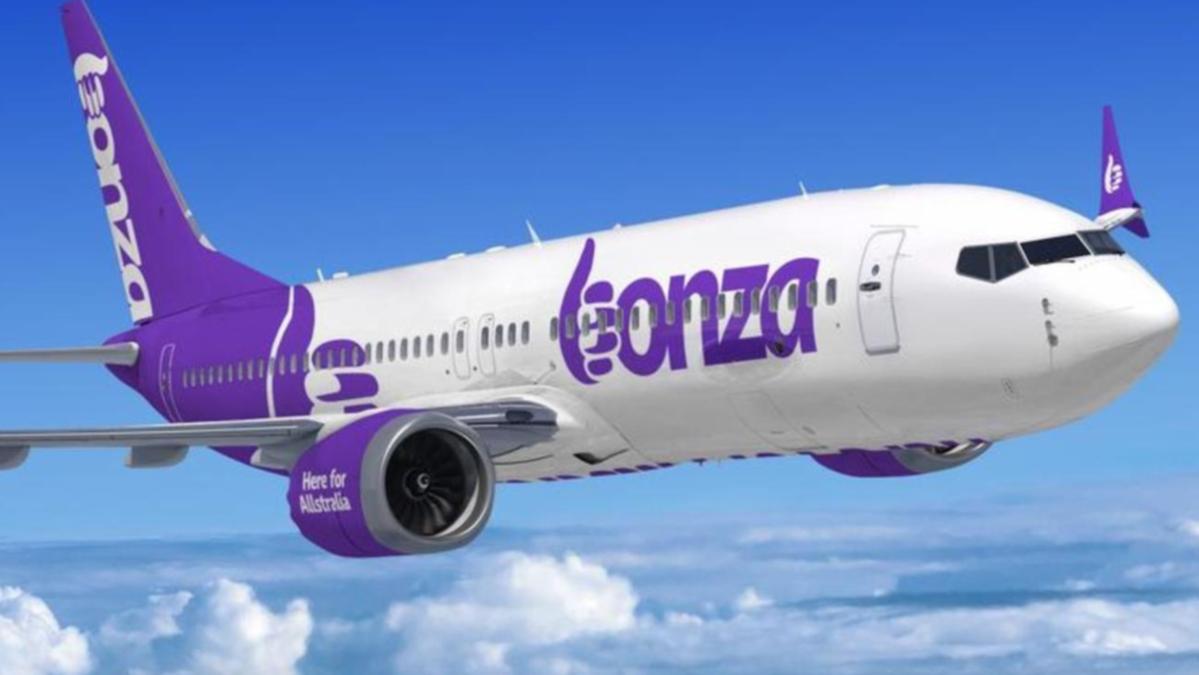The future of budget airline Bonza is officially over, with creditors voting to liquidate the company.
At a meeting with administrators Hall Chadwick on Tuesday, the upstart airline’s creditors ended the months-long saga that kicked off in late April when the company first collapsed.
Bonza launched to the skies in January 2023, taking on behemoths Virgin and Qantas.
The airline offered Australians in the regions a chance to snatch a holiday to tourist hotspots or see loved ones in under-serviced cities and towns at ultra-low prices.
But less than 18 months later, Bonza went bust, collapsing into administration with thousands of passengers left stranded.
On June 11, some 500 Bonza workers were terminated.

Workers are collectively owed an estimated $10.8m in wages, redundancy and pay in lieu of notice, the Transport Workers Union said on Tuesday afternoon.
TWU national secretary Michael Kaine said the vote meant workers could access their entitlements.
“The finality of Bonza’s collapse is a sad event for Australia’s aviation industry but brings the certainty workers needed to access the Fair Entitlements Guarantee scheme for their owed entitlements, including wages for work completed in April,” he said.
“With cost-of-living still bearing down, 500 families suffered sudden loss of income and months of turmoil about their futures.
“Rebuilding a sustainable aviation industry has never been more critical for workers, passengers and the community.”
Hall Chadwick has been contacted for comment.
The accountancy firm scrambled to determine whether Bonza could emerge from administration and re-enter the skies, but administrators did not receive any binding offers for the embattled airline.

“The deadline for interested parties to submit a binding offer in relation to the future of Bonza Aviation expired at the close of business Friday, June 7 2024,” the firm said on June 11.
“The Administrators assisted a number of interested parties through the sale campaign, allowing each party to conduct their due diligence and formulate any offer.
“Unfortunately, the Administrators did not receive any binding offers.
“While this is not the news stakeholders wish to hear, the Administrators must make a decision with respect to the stand down of the employees.
“Furthermore, customers need certainty regarding the operation of future flights.
“As a result, the Administrators have no option but to terminate all employees and cancel all future flights.”
Multiple factors led to Bonza’s downfall, according to aviation experts.
For one, Bonza did not compete in the all-important Brisbane-Sydney-Melbourne market or what the aviation industry refers to as Australia’s “Golden Triangle”.
This meant the company lost out on the market’s most concentrated money pot.
“The Golden Triangle is so important because this is where most of the action happens and where the money is being made,” Professor Rico Merkert, deputy director at the Institute of Transport and Logistics Studies at the University of Sydney Business School, told NCA NewsWire.
Bonza also operated with just four aircraft.
The Australian’s aviation writer Robyn Ironside says it is “not looking terribly good” for Bonza passengers. This comes amid the collapse of the airline Bonza as it entered voluntary administration. “They’ll probably find out more at a creditors meeting this Friday,” Ms Ironside told Sky News Australia. “Administrators will speak directly to the creditors, among them customers. “To date, they’ve been told there are no refunds.”
By contrast, Qantas has more than 100.
With such a limited fleet, there is little room for error and timetables can quickly become scrambled.
The low-cost carrier also leased Boeing 737-8s, which are large aircraft that boast 186 seats.
Professor Merkert said there may not have been “sufficient demand” to keep the fleet afloat.
“The Bonza story was great from a cost perspective, which was essentially getting super cheap aircraft during the pandemic that were not only cheap from a capital cost but also operating cost perspective,” he said.
“Being brand new, surely, they would be popular with the customers, too, especially at such low fares and being operated at routes that no one else did, which was 84 per cent of their routes.
“And sure, Bonza optimised their cost structure to the extreme.
“Problem is, this does not guarantee sustained profits.
“Those aircraft had 186 seats and those seats want to be filled on as many flights as possible.

